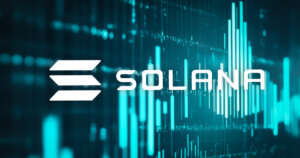 In 2019, Ethereum proved that blockchain’s ideals are alive and well
In 2019, Ethereum proved that blockchain’s ideals are alive and well In 2019, Ethereum proved that blockchain’s ideals are alive and well

Cover art/illustration via CryptoSlate. Image includes combined content which may include AI-generated content.
When it comes to Ethereum, the future of adoption remains decentralized, privacy-focused, and non-custodial.
Despite the lukewarm recovery of the cryptocurrency market and concerns about blockchain centralization, 2019 in Ethereum was big on figuring out easy and secure solutions to make decentralization user-friendly.
After the 2017 ICO boom, 2018 was a year of uncertainty and doubt for crypto. As regulators began to exert their influence in the space and the market endured a prolonged bear phase, members of the crypto community as well as outside commentators began to believe that in order to survive, cryptocurrency must compromise the most important of its original blockchain ideals: decentralization, privacy, and autonomy.
Nevertheless, looking back at 2019, it’s clear that those principles remain intact and foremost in the minds of developers working on solutions for the Ethereum blockchain. Moving forward as a community, we must keep in mind that if we dedicate time and effort to building friendly, secure, intuitive decentralized solutions, we can preserve blockchain ideals without sacrificing adoption.
DeFi and Web3 show value of decentralization, great UX unlocks its potential
Decentralized finance (DeFi) products have seen considerable growth over 2019, but their role in 2020 will be defined in many ways by the quality of a user’s experience. Technologies that can bring traditional finance tools to the blockchain in a trustless manner have the potential to reduce friction and, as a result, bring us closer to a future with a decentralized global economy.
Despite overall security standards improving throughout the space, major exchange hacks continue to happen, highlighting the dangers of centralized control. Decentralized exchanges (DEX) are becoming more user-friendly, providing convenience without making users dependent on third parties.
Centralized crypto exchanges have grown quickly due to the familiarity of their custodial user experience, but 2020 will be the year when advantages of decentralized finance
will become more apparent. Already, DeFi credit instruments built by projects like MakerDAO and Aave are winning over users as they discover the benefits of immediate, unfettered access to crypto loans.
Meanwhile, multiple teams have achieved breakthroughs with decentralized website hosting, adding to the growing infrastructure for Web3. Ethereum Name Service and Unstoppable Domains are two services that allow for decentralized cloud (IPFS) website hosting on the Ethereum and Ziliqa blockchains.
This is a phenomenal achievement as they are paving the way for an uncensorable internet, while driving crypto adoption by giving users a readable name for their wallets instead of hexadecimal strings of characters. Decentralized hosting has the potential to transform blockchain use much like email transformed Internet use.
Privacy and self-custody remain high priorities
In Ethereum, 2019 was a very big year for figuring out ways to create private transactions. Some blockchains like Monero, Zcash, and Zcoin already feature a built-in privacy layer, but bringing the same level of privacy to a public blockchain with smart contracts has proven to be a challenge. However, projects like Tornado Cash and MicroMix were able to utilize ZK (Zero-Knowledge) proof technology to achieve privacy it in Ethereum, and 2020 is sure to bring more advances in this field.
In addition, custody and control over one’s own funds and transactions will remain very important to users. Although currently, custodial solutions are onboarding users at a quick pace, this is simply because there is high familiarity with the custodial experience. All you need to access an account is a username and password, and you can always rely on a password reset through an email link. Unlike in the traditional banking sector, the responsibility for managing cryptocurrency assets lies with the user.
Converting users from a custodial account experience to a non-custodial solution is an uphill battle that can only be won through thoughtful UX. This year, many projects including MEW focused their efforts on improvements and complete interface revamps to make non-custodial security more intuitive. Users are becoming more aware of what can happen when they entrust their money and data to third parties – the ‘easier’ way turns out to be more costly in the end. But ultimately, it will be this understanding paired with ease of use that will catalyze the switch to non-custodial crypto alternatives.
Key management must focus on supporting universal access
It has also been encouraging to see how blockchain projects took steps to update solutions for private key management. Generally, the point is to put some distance between the user and their private keys, without compromising security. On a daily basis the user should only have to deal with familiar things like biometric and pin code access, but still retain full ownership of their keys for the option of wallet recovery, if needed.
MEW’s own mobile app MEWconnect was created to be a more secure alternative to software wallets and a more accessible alternative to hardware wallets. Most modern-day smartphones have a secure enclave for sensitive information and it can be used by mobile wallet apps for storing keys. In fact, developments in mobile and browser wallet technologies are especially significant: many users in developing countries, where decentralized finance is needed most, don’t have, and may never have, access to desktop computers.
At MEW, we feel that one of the important goals for the Ethereum community in 2020 will be to continue transitioning users from less secure access methods like private key, mnemonic phrase, and keystore file, to more secure ones like hardware wallets and new key management technologies including MEWconnect, WalletConnect, WalletLink, and Universal Login. It’s essential to facilitate this process with support and education so that users are empowered to retain self-custody of funds without resorting to risky access methods.
Decentralization made user-friendly
2019 has been a year of meaningful developments in the Ethereum ecosystem that have made decentralized technologies more available, accessible, secure, and less intimidating for users. With these improvements, cryptocurrencies can become a true alternative rather than a cosmetic update to traditional finance, or a centralized financial structure that significantly departs from the original blockchain principles.
The concerns that cryptocurrency will end up following the life cycle of centralized platforms, finally exploiting rather than empowering its users, are historically and philosophically valid, but rumors of the demise of crypto decentralization are greatly exaggerated. The year 2020 will bring us much closer to a cryptocurrency space that’s worth waiting for – a space where the decentralized choice is the natural choice, not for the sake of ideology, but for the undeniable benefits it brings to the users’ experience of their daily lives.















































































































